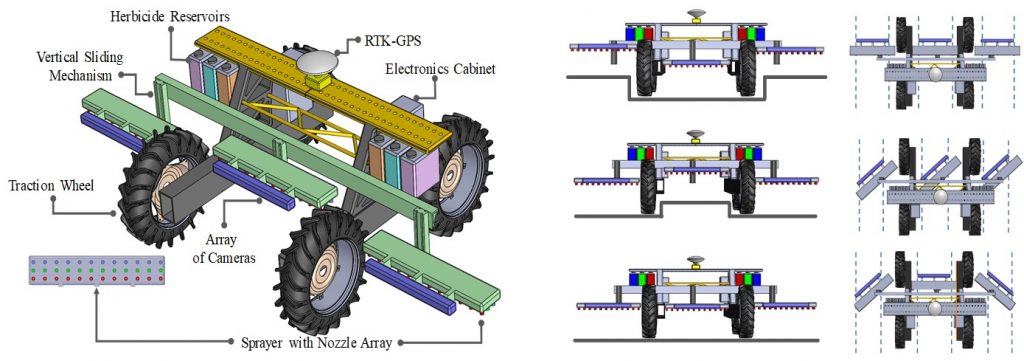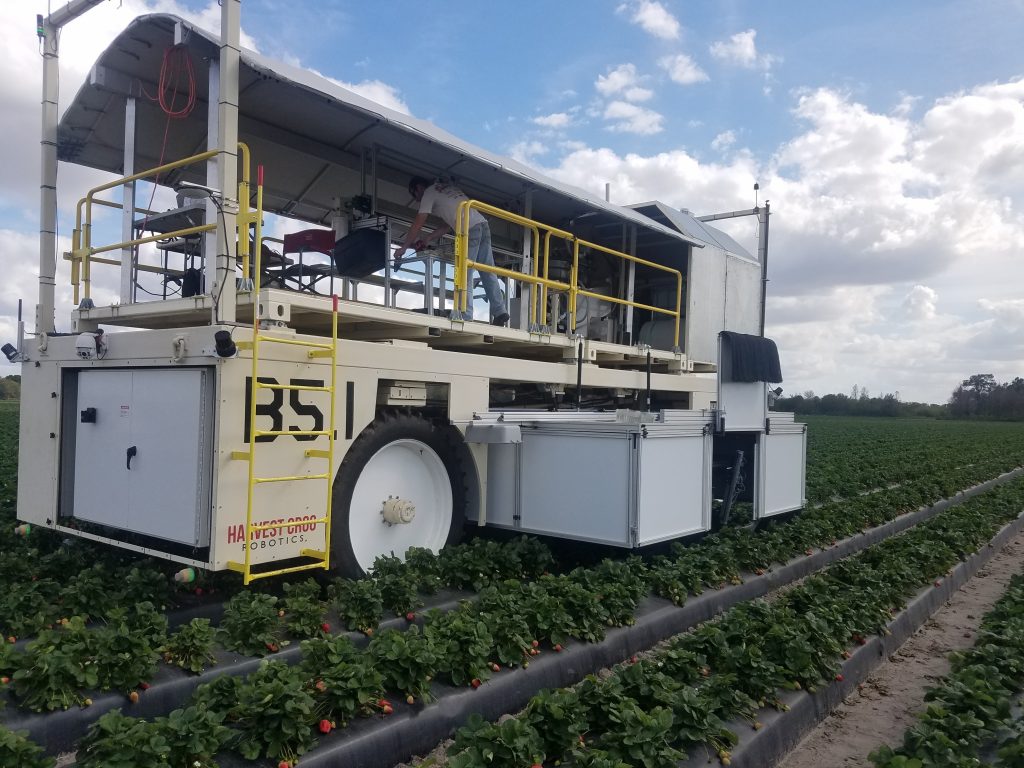
By Yiannis Ampatzidis
Vegetable growers face a variety of challenges, including pest and diseases, labor shortages and climate change. How can new advancements in technology help growers address these challenges? Can technology improve crops, reduce production costs and protect the environment? How can technological innovations be incorporated into traditional farming to improve production practices?
In the last few decades, several “smart” technologies have been developed for vegetable production and processing. However, growers are confronted with a variety of challenges when considering adopting new technology or adjusting existing technology. Growers are being offered solutions that might not work in their specific production system or might not be economically feasible. This article presents examples of state-of-the-art technologies that may be used in vegetable production today or in the near future!
SIMPLIFY SURVEYING
Field surveys for disease/pest scouting and to assess plant stress are expensive, labor intensive and time consuming. Since labor shortage is a major issue in vegetable production, small unmanned aerial vehicles (UAVs) equipped with various sensors (remote sensing) can simplify surveying procedures, reduce the labor cost, decrease data collection time and produce critical and practical information.
For example, recently UAVs and remote sensing have allowed growers to constantly monitor crop health status, estimate plant water needs and even detect diseases. The precision agriculture team (@PrecAgSWFREC) at the University of Florida Institute of Food and Agricultural Sciences (UF/IFAS) Southwest Florida Research and Education Center (SWFREC) developed a cloud-based application called Agroview (http://agroview.farm/login.php).
Agroview can process, analyze and visualize data collected from UAVs and other aerial platforms (e.g., small planes and satellites). This technology utilizes machine learning (an application of artificial intelligence) to detect single plants and assess plant size and stress. Agroview and UAVs were initially used to create plant inventories in citrus (see a video demonstration at https://twitter.com/i/status/1202671242647490560) and to detect specific diseases in vegetables with high accuracy. Early detection and eradication of infected plants is crucial to controlling disease and pest spread throughout the field.
SMART SPRAYERS
Most conventional sprayers apply agrochemicals uniformly, even though distribution of pests and diseases is typically patchy, resulting in waste of valuable compounds, increased costs, crop damage risk, pest resistance to chemicals, environmental pollution and contamination of products. Contamination can be related to run-off after application, discharge from drainage and off-target deposition of spray due to wind (spray drift). This contamination can be significantly reduced through optimization of spraying technology.
Spray drift of agrochemicals occurs during every application and accounts for a loss of up to 50 percent of the agrochemical used. Minimizing the negative impacts of agrochemicals (and spraying technologies) is a major global challenge.
More than 90 percent of the acreage of crops in the United States are being sprayed with herbicides. It is estimated that $26 billion is spent on herbicides (more than 3 billion pounds) each year. This overuse of chemicals creates herbicide-tolerant weeds and approximately 250 known species of resistant weeds.
In recent decades, several smart technologies have been developed for pest detection and for optimizing spraying applications. These new spraying technologies have shown an important improvement in efficiency and safety by adopting the latest advances in electronics, artificial intelligence (AI) and automation.
One example is the See & Spray machine developed by Blue River Technology (www.bluerivertechnology.com) for weed control in arable crops. See & Spray utilizes computer vision and AI to detect and identify individual plants (such as cotton) and weeds and then applies herbicide only to the weeds. See how this technology works at https://youtu.be/gszOT6NQbF8. This machine can reduce the required quantity of herbicide by more than 90 percent compared to traditional broadcast sprayers. However, this technology was designed for arable crops and might not be a cost-effective solution for specific vegetable production systems.
Another low-cost smart sprayer has been designed and developed by the UF/IFAS team for precision weed management in vegetables. In the initial evaluation experiments, smart technology was able to accurately detect and distinguish weeds from crops and apply chemicals only on specific weed(s), thus avoiding crops and areas without weeds. See a video demonstration of this technology at https://twitter.com/i/status/1045013127593644032.
Recently, the precision ag team, in collaboration with Abhisesh Silwal (Carnegie Mellon University) and Panos Pardalos (UF), received funding from the U.S. Department of Agriculture and the National Research Foundation (award #2020-67021-30761) to improve and fully automate this smart sprayer. This novel robotic sprayer (or fleet of sprayers) was designed to be self-reconfigured and self-adjustable for easy field deployment (Figure 1). With this design, the robot can reconfigure itself (Figure 1b) to manage weeds in a variety of vegetable fields (e.g., with different row spacing and raised bed sizes).
ROBOTIC HARVESTING

Fresh-market vegetables are quickly perishable and virtually 100 percent are hand-harvested. Vegetable growers face increasing shortages of laborers, which in turn, drive up harvest costs. Mechanical and robotic harvesting systems for vegetable growers could simultaneously decrease their dependence on manual labor, reduce harvesting costs and improve overall competitiveness in the market.
In one example, Harvest Croo Robotics, a Florida company, is developing a robotic harvester for strawberries that does not require growers to radically change the way they currently grow crops. This technology successfully harvested berries during the 2019–20 season. It could address the labor shortage problem and increase grower profit.









